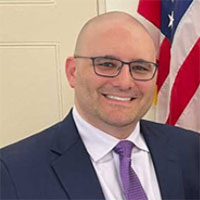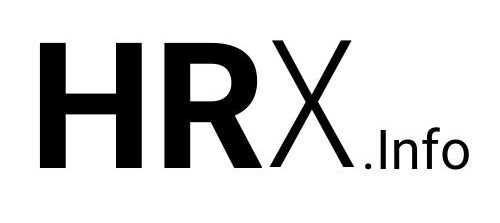By Chris Babigian
Who’s ready to talk numbers? Because we’ve got figures to share; go figure!
A defining strength of the PEO industry has always been its ability to adapt—both in supporting small and medium-sized businesses (SMBs) through evolving payroll and HR needs and in navigating regulatory changes that directly affect the industry. Statistics during the tumultuous COVID-19 pandemic in particular bear this out. According to research from the National Association of Professional Employer Organizations (NAPEO) SMBs using a PEO were:
- 77% more likely to have received a Paycheck Protection Program (PPP) loan.
- 58% more likely to have remained in business.
But this is far from a one-sided story. National PEO Week—federally recognized for the third consecutive year and now officially acknowledged in 14 states—is a vibrant reflection of the industry’s growing influence and the impact of NAPEO’s efforts.
And those figures? They’re just the tip of the iceberg. As regulations and policies shift daily, here are 10 numbers to know that may continue to shape—and be shaped by—the industry over the next year.
10 Numbers Every PEO Should Be Aware of in 2025
One: The 2025 massive House reconciliation bill, formally named the “One Big Beautiful Bill Act,” or OBBBA for short, is quickly winding its way through the legislative process. While the details of the bill may change, Republicans seem poised to pass a version that includes No Tax on Tips and No Tax on Overtime provisions, along with several measures that may impact employer-sponsored benefits. With some components of OBBBA currently retroactive to Jan. 1, 2025, PEOs may need to quickly pivot to ensure accurate and timely support.
$25,000: The current House OBBBA No Tax on Tips provision:
- Does not cap the amount of tips that are tax deductible.
- Ends on Dec. 31, 2028.
- Would be available to both W-2 employees and 1099 contractors.
A competing No Tax on Tips Senate bill has a $25,000 annual tax-deduction limit per employee, no end date and applies to W-2 employees only. These variations have differing implications for W-2 and1099 reporting, which is a core PEO function. As the dust settles, pay careful attention to the final language adopted and any subsequent guidance. You know we will!
600,000: NAPEO has long championed the resolution of all outstanding Employee Retention Tax Credit (ERTC) claims, a relic of the pandemic (read our blog from 2024) designed to assist small businesses. But as of April 2025, roughly 600,000 claims were still unresolved. Out of concern over rampant fraud, the original version of OBBBA contained a provision that:
- Retroactively changed the filing deadline for all ERTC claims, some of which currently have a statutory April 2025 deadline, to Jan. 31, 2024.
- Extended the statute of limitations for IRS assessments from roughly three years to six years.
- Increased penalties for “promoters” who charged contingency fees to assist in the claim process.
Notably, Certified PEOs were excluded from the definition of promoters. While these changes were all struck from the most recent iteration of OBBBA, they signal that the final chapters of the ERTC saga are still to be written.
3223: The IRS has consistently asserted that PEOs are liable for tax credits improperly claimed on behalf of their clients, including the ERTC. This has placed PEOs in an untenable position, dependent on client attestations of credit eligibility while having no stake in the proceeds. HR 3223, a NAPEO-supported bill introduced on May 6, seeks to rectify this disconnect. Under the proposed legislation, PEOs would be held liable only if they knew—or should have known—that a client’s eligibility certification was inaccurate.
2.0: Starting in 2026, “highly paid” employee catch-up contributions (from 401(k)s, 403(b)s and 457(b)s) must be made on a Roth basis only. This is one of the many provisions of 2022’s SECURE 2.0 Act. This past January, the IRS published proposed regulations regarding employee catch-up, which directly acknowledges Certified PEOs (CPEOs) and other service provider arrangements. Under the proposed rules, “highly paid” determinations should be made based on employee wages earned under each “common law employer” client company, and not based on the PEO.
1964: The first commercial fax machine was released by the Xerox Corp in 1964. 61 years later, “Retire the Fax Machine” is a core NAPEO initiative aimed at overall IRS modernization. Within the past year, the IRS has already made significant progress, including adding e-file support for the 941-X. Next up? Watch for a push for a broader digital platform that also tracks IRS correspondence and return statuses.
5500: PEOs sponsoring a Multiple Employer Plan (MEP) for retirement must file both Form 5500 and the associated Schedule MEP with the U.S. Labor Department each year. The Schedule MEP in particular mandates the disclosure of all participating clients and their Employee Identification Numbers (EINs), which is sensitive, proprietary PEO information. This has long been a point of concern within the industry, as the Labor Department publishes this data, making it readily available to the public. On May 12, NAPEO filed a letter with the Office of Management and Budget expressing its concerns. Additionally, other renewed efforts to revamp this requirement may be on the horizon.
5x: State payroll and HR requirements often not only include distinct standards for large and small businesses but also define these classifications differently. For instance, Alaska’s Paid Sick Leave, effective July 1, applies different rules to employers with 15 or more employees. On the other hand, Nebraska paid sick time, effective Oct. 1, exempts businesses with 10 or fewer employees and categorizes those with more than 10 but fewer than 20 employees as small businesses.
These distinctions carry uniquely significant implications for the PEO industry. Almost 50% of clients have fewer than 20 employees, and, with such a large client base hovering around an ever-growing list of thresholds, employee-count tracking is more vital than ever to PEO client management.
15: To date, 14 jurisdictions (13 states and Washington, D.C.) have enacted some form of mandated Paid Family and Medical Leave. Which state is most likely to be the 15th? Pennsylvania, where lawmakers continue to gradually advance HB 200, remains the frontrunner. However, neither HB 200 nor Maryland’s PFML program, set to take effect on Jan. 1, 2027, explicitly address the complexities of the PEO relationship. This omission could muddy PEO-client reporting requirements, employee-count analysis and private plan adoption. Watch for further clarification, whether through statute, regulatory rulemaking or official guidance.
2236: On June 9, Oregon enacted HB 2236, officially making it a State Unemployment Tax Act (SUTA) choice jurisdiction for PEOs. For tax years starting Jan. 1, 2026, PEOs can now formally elect to calculate and report SUTA on either a client or PEO basis, with the latter serving as the default if no election is made. As Oregon is a combined reporting state, this change also has downstream implications for all payroll taxes. Meanwhile, Maine is transitioning to a client-only SUTA rate and reporting system, effective Jan. 1. These shifts reflect a broader trend of states reassessing previously settled PEO-reporting practices, especially as they evaluate how newly adopted requirements, like PFML, should apply in the PEO framework.
While the full impact of PEO industry regulatory advocacy can be difficult to measure, NAPEO’s annual market research points to growing recognition among U.S. business owners and decision-makers. Notably, the 2024 study found that 90% of respondents under the age of 35 are familiar with PEOs—a promising number that hints at the industry’s vitality and potential in the years ahead.

Chris Babigian is PrismHR’s compliance strategy manager. A graduate of Boston University School of Law with a focus in taxation, Chris spent five years handling motions, appellate briefs and trial discovery for a civil litigation firm. In 2014, Chris transitioned to PrismHR, where he translates regulatory requirements into software solutions.







![15 Employee Offboarding Templates That Save Hours of HR Time [Free Downloads] 15 Employee Offboarding Templates That Save Hours of HR Time [Free Downloads]](https://i1.wp.com/www.hrcloud.com/hubfs/Header.png?w=150&resize=150,100&ssl=1)


